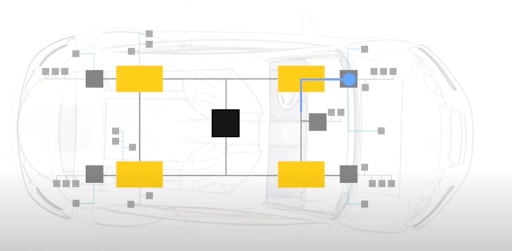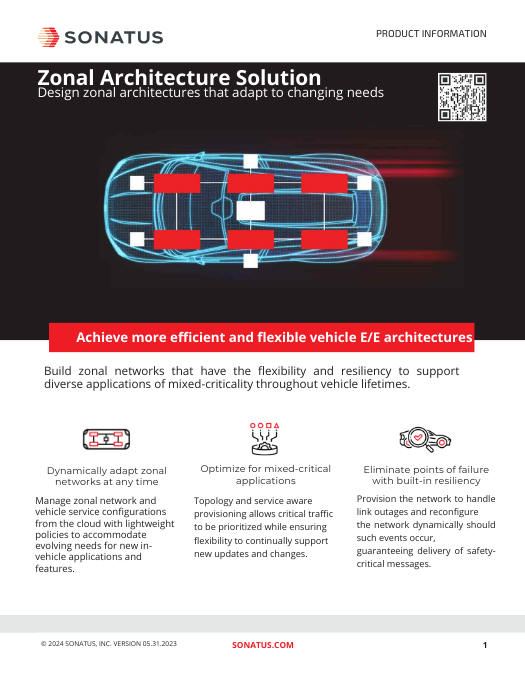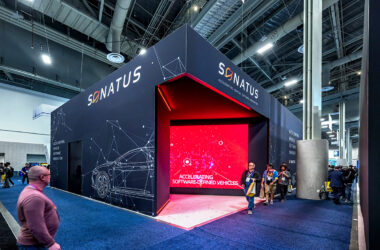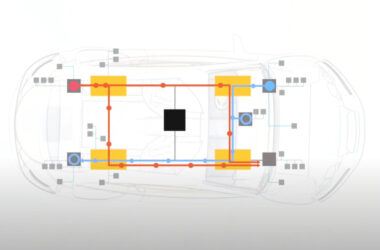Dynamically adapt zonal networks at any time
Manage zonal network and vehicle service configurations from the cloud with lightweight policies to accommodate evolving needs for new in-vehicle applications and features.
Optimize for mixed-critical applications
Topology and service aware provisioning allows critical traffic to be prioritized while ensuring flexibility to continually support new updates and changes.
Eliminate points of failure with built-in resiliency
Provision the network to handle link outages and reconfigure the network dynamically should such events occur, guaranteeing delivery of safety-critical messages.
Dynamic configuration
Dynamic Vehicle Network Configuration based on 802.1DG TSN Profile for Automotive
- Network routing
- Quality of Service
- Network security
- Frame Replication and Elimination for Reliability (FRER)
- Time synchronization
Network monitoring
Vehicle network visualization and health monitor
- Diagnostic tool for visualizing network traffic and problems
- Vehicle network performance management
- Ethernet and CAN network monitoring
SOA management
SOA Manager for integrating applications across zones and vehicle domains
- Registry for service discovery and subscription
- Policies to manage SOA services access and communications
- Monitoring of security, health and performance of SOA services
OTA framework
Framework for distributing OTA updates across all in-vehicle networks
- Distribute updates across all zones
- Applied to Ethernet and CAN ECUs
- Configuration policies, applications, containers, and more




